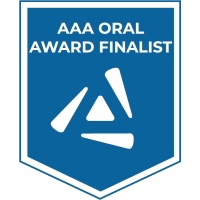Back
ANATOMY
Cell Biology
279.3 - Elucidating the Role of Hypoxia Signaling in Placental Trophoblast Differentiation
Monday, April 4, 2022
1:45 PM – 2:00 PM
Room: 108 A - Pennsylvania Convention Center
Introduction: R.R. Bensley Award in Cell Biology Lecture featuring 2022 Early-Career Investigator Award Recipient Patricia Ward
Adam Jaremek (University of Western Ontario), Gargi Jaju Bhattad (University of Western Ontario), Mariyan Jeyarajah (University of Western Ontario), Stephen Renaud (University of Western Ontario, Childrens Health Research Institute, Lawson Health Research Institute)
-
Adam Jaremek
Presenting Author
University of Western Ontario
Presenting Author(s)
Introduction: Preeclampsia is a common and severe disease of pregnancy presenting as hypertension and blood vessel damage in mothers that can lead to organ failure, stroke, and death of the mother and/or baby. There is no cure except early delivery of the baby, which poses immediate and long-term health risks for the prematurely delivered infant. The root cause of preeclampsia is improper development of the placenta – the temporary organ supporting growth of the baby in the womb. Continuous formation of the placental syncytiotrophoblast (STB) via differentiation and fusion of progenitor cytotrophoblast (CTB) cells is vital for healthy placentation and is impaired in preeclampsia. Preeclamptic placentas are also associated with chronic hypoxia, or insufficient O2, which activates the hypoxia-inducible factor (HIF) transcriptional complex to elicit an adaptive cellular response. Past studies suggest that hypoxia inhibits CTB differentiation into STB, yet the underlying mechanisms are not well understood.
Objective: The goal of our study is to assess whether HIF activity inhibits CTB differentiation and to identify genes regulated by HIF that are involved. Therefore, we hypothesize that hypoxia-HIF signaling impairs STB formation by interfering with transcription of genes needed for CTB differentiation.
Methods: Cells of the CTB-like cell line, BeWo, were transduced with lentivirus carrying shRNA specific to ARNT (a key component of the HIF complex) or control shRNA. Cells were induced to differentiate into STB by treating with 8-Bromo-cAMP for 48 h under hypoxic (1% O2) or standard culture (20% O2) conditions. The capacity to form STB was evaluated using qRT-PCR to assess transcript levels of CTB and STB markers as well as immunofluorescence to quantify multinucleated, hormone-producing cells. Data were analyzed using two-way ANOVA followed by Holm-Sidak’s multiple comparisons test, with Plt;0.05 considered significant.
Results: BeWo cells induced to differentiate under hypoxic conditions showed decreased STB-associated transcripts (75%, 86%, and 99% decreased ERVFRD-1, OVOL1, and CGB expression respectively) as well as an 82% reduction in percent fusion compared to cells differentiated under standard conditions (N=3, Plt;0.05). Knockdown of ARNT restored the capacity of cells to form STB as evidenced by an induction of STB-associated transcripts (18, 20, and 17-fold increased ERVFRD-1, OVOL1, and CGB expression respectively) as well as a 5.6-fold increase in percent fusion for ARNT-knockdown versus control cells induced to differentiate under hypoxic conditions (N=3, Plt;0.05).
Conclusion: Hypoxia represses expression of genes vital for CTB differentiation, impairing STB formation. ARNT knockdown prevents this inhibitory effect, suggesting HIF plays a role.
Significance: This study provides insight into mechanisms underlying disrupted STB formation during hypoxia and in preeclampsia pathogenesis. Future work will identify genes regulated by HIF that are involved, which will open doors to develop novel therapeutics that could restore impaired STB formation and improve disease prevention and management.
Support or Funding Information
Funded by Natural Sciences and Engineering Research Council of Canada, 5053.
Objective: The goal of our study is to assess whether HIF activity inhibits CTB differentiation and to identify genes regulated by HIF that are involved. Therefore, we hypothesize that hypoxia-HIF signaling impairs STB formation by interfering with transcription of genes needed for CTB differentiation.
Methods: Cells of the CTB-like cell line, BeWo, were transduced with lentivirus carrying shRNA specific to ARNT (a key component of the HIF complex) or control shRNA. Cells were induced to differentiate into STB by treating with 8-Bromo-cAMP for 48 h under hypoxic (1% O2) or standard culture (20% O2) conditions. The capacity to form STB was evaluated using qRT-PCR to assess transcript levels of CTB and STB markers as well as immunofluorescence to quantify multinucleated, hormone-producing cells. Data were analyzed using two-way ANOVA followed by Holm-Sidak’s multiple comparisons test, with Plt;0.05 considered significant.
Results: BeWo cells induced to differentiate under hypoxic conditions showed decreased STB-associated transcripts (75%, 86%, and 99% decreased ERVFRD-1, OVOL1, and CGB expression respectively) as well as an 82% reduction in percent fusion compared to cells differentiated under standard conditions (N=3, Plt;0.05). Knockdown of ARNT restored the capacity of cells to form STB as evidenced by an induction of STB-associated transcripts (18, 20, and 17-fold increased ERVFRD-1, OVOL1, and CGB expression respectively) as well as a 5.6-fold increase in percent fusion for ARNT-knockdown versus control cells induced to differentiate under hypoxic conditions (N=3, Plt;0.05).
Conclusion: Hypoxia represses expression of genes vital for CTB differentiation, impairing STB formation. ARNT knockdown prevents this inhibitory effect, suggesting HIF plays a role.
Significance: This study provides insight into mechanisms underlying disrupted STB formation during hypoxia and in preeclampsia pathogenesis. Future work will identify genes regulated by HIF that are involved, which will open doors to develop novel therapeutics that could restore impaired STB formation and improve disease prevention and management.
Support or Funding Information
Funded by Natural Sciences and Engineering Research Council of Canada, 5053.

